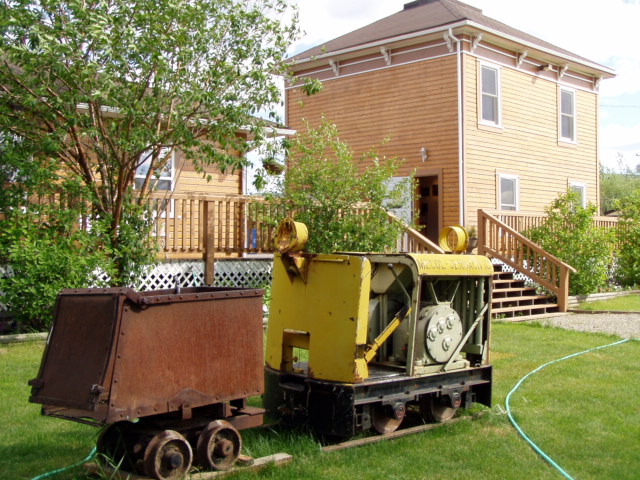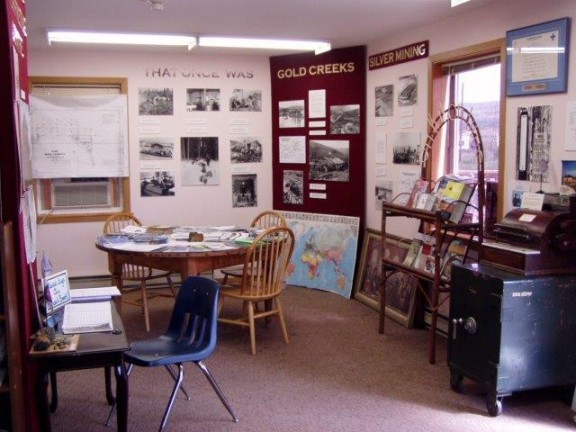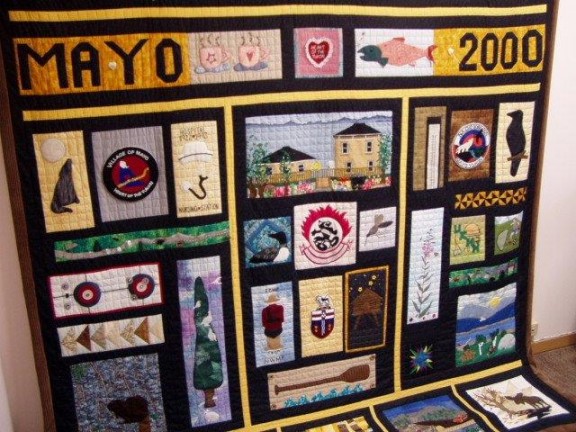Binet House Museum

The Binet House Museum features interpretive displays about Mayo’s history, a gift shop and tourist information. It is open from late May to mid September, 10 am to 6 pm daily.
Visitors can view displays about permafrost, geology and gold & silver mining in the Mayo district. There are displays of historical photos, artifacts, and exhibits about Mayo residents and the First Nation of Na-Cho Nyak Dun. The Binet House Museum also houses a large collection of medical artifacts and a display of locally made arts and crafts. Visitors can pick up Silver Trail and Mayo Walking Tour brochures at the facility.
History of the Binet House and the establishment of Mayo
The Binet House Museum is located in a restored 1920’s heritage building at 304 Second Avenue. This house was built for Gene Binet, one of Mayo’s Forefathers, and his bride Jewel.
Joseph Eugene “Gene” Binet was born in Charlebourg, Quebec. In 1895, he climbed the Chilkoot Pass, and travelled that summer with two others to both Fortymile and Circle City. He returned the following season and was on the Yukon River between St. Michael and Circle city when gold was struck in the Klondike. He arrived in the Klondike in late December 1896 and began to buy claims. His brothers Joe and Phil joined him, and they mined on several creeks. They also operated hotels, saloons, and mercantile businesses not only in Dawson but in Nome, Alaska.

When Gene Binet heard that the townsite of Mayo had been surveyed and that a road would be built, he arrived late in the winter of 1903 to buy lots and build a hotel. He brought building tools and a crew of six men for the hotel construction, and he personally felled the first spruce from the hotel site. By the time the ice went out on the Stewart River, Binet’s 30×60 foot, two storey log hotel was assembled, and by July 1903 the rooms were ready and the dining room operating.
Binet soon sold a number of his lots, then built a store on to his hotel. The establishment became known as J.E. Binet’s Chateau Mayo Hotel and Store. The following year he enlarged the hotel to 60×60 feet with 26 rooms.
He also grew potatoes in commercial quantities, and kept a cow, chickens, and several pigs. By 1915 he owned a stable and had invested in a sawmill with Fred Lefebvre as partner.
During the 1920’s Gene Binet married Jewel and built a home in Mayo. It is said that he imported the wallpaper for this house from France. In 1938 Gene Binet sold the hotel and store and his interest in the sawmill and retired to California. He died on December 26, 1943 in Los Angeles.
Gene and Jewel Binet’s house still stands. It was occupied by several Mayo families over the years and in 1990, after it had been vacant for some time, the building was purchased by the Village of Mayo and with assistance from the Mayo Historical Society it was turned into a Museum/ Interpretive Centre. A small Annex was built on the property to house the gift shop and additional displays.
Mayo was founded in 1903 and was named after Alfred H. Mayo, a one-time circus performer in his home state of Maine, who later captained the small steamer “New Racket” in partnership with famous traders Jack McQuesten and Arthur Harper. Together the trio traveled to explore the north, finally landing on the Stewart River in the central Yukon in 1886. They set up a trading post for the growing number of miners coming to look for gold.

Present day Mayo was incorporated in 1984, becoming the Village of Mayo.
Mayo is located in the heart of the traditional territory of the First Nation of Na-Cho Nyak Dun (Big River People). Na-Cho Nyak Dun people have lived throughout their traditional territory for thousands of years. In the 1950s many settled in Mayo. The First Nation of Na-Cho Nyak Dun signed their Land Claims and Self-Government Agreement in 1993. Today Mayo’s population is approx. 50% First Nation and a cultural mix of non-first nation people.
United Keno Hill Mine at Elsa, 50 km north of Mayo, was once the largest silver ore producer in North America. It operated from 1929-1989. In 2006 Alexco Resources bought United Keno Hill Mines and is continuing to operate the mine.
Many small scale placer gold mines still operate during the summer months throughout the Silver Trail region.
